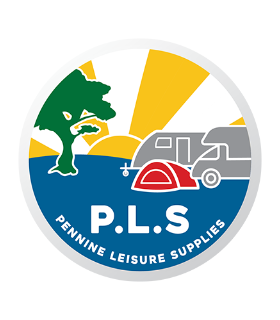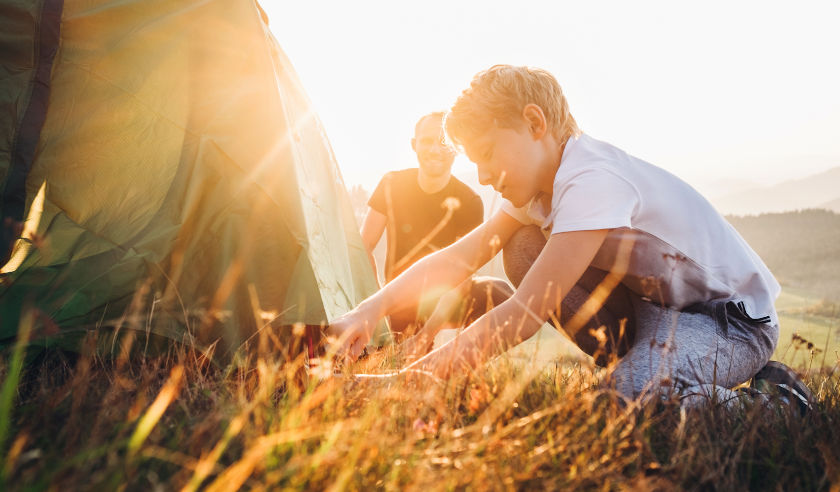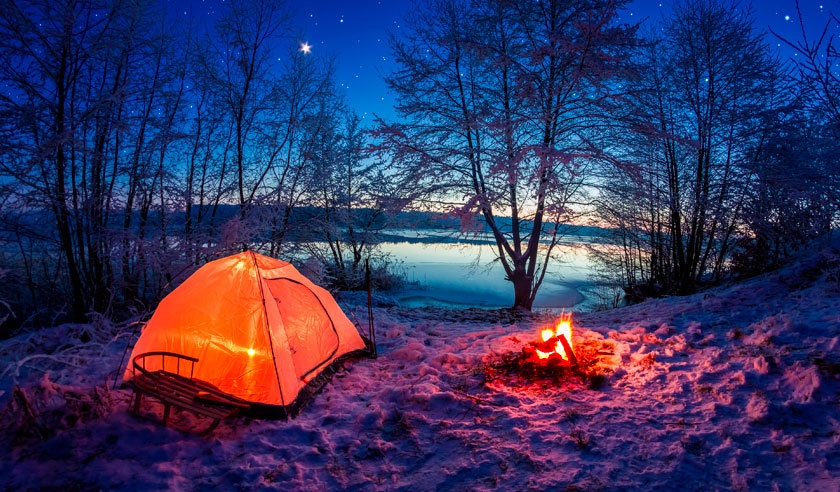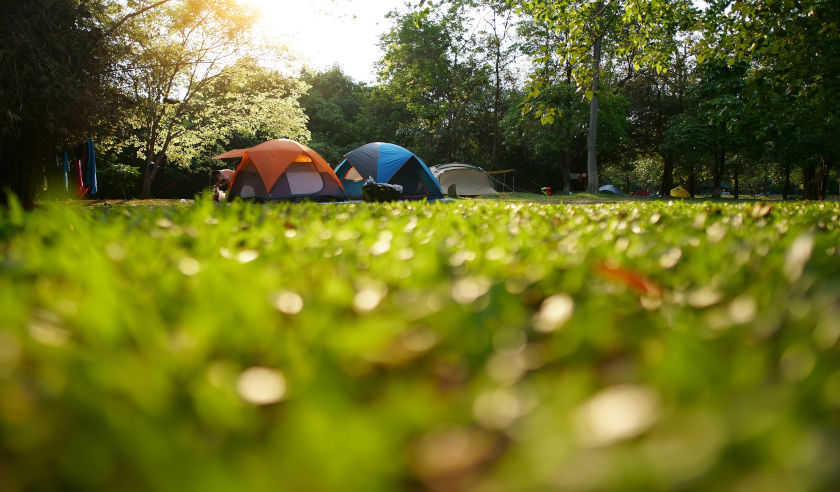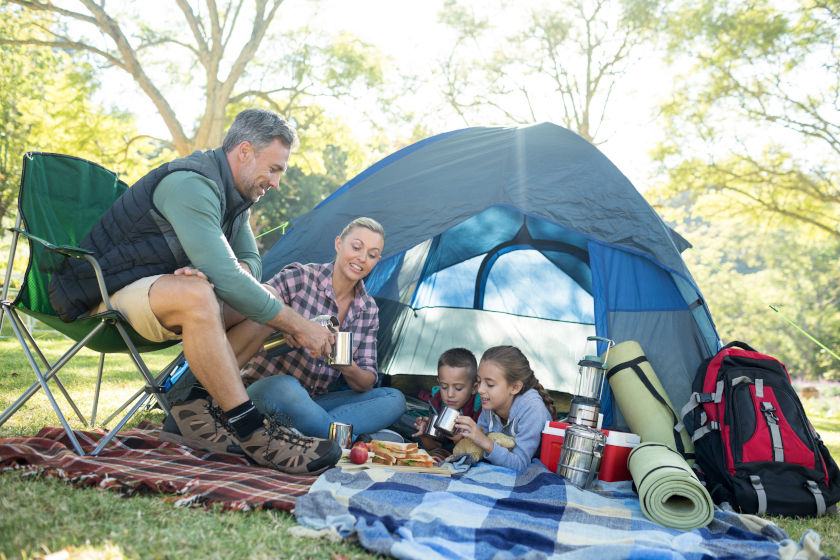Many of us enjoy the simple pleasure of a camping holiday but for the novice camper it can feel a bit daunting. What kind of camping is there? What essential camping gear do you need? What should you wear? And what will you eat? Here, we walk you through all these aspects of camping to make your first experience as stress-free and enjoyable as it should be.
Different types of camping
There are several types of camping on offer in the UK, with some more suited to the beginner camper than others.
Campsite camping
A safe choice for the novice camper, a campsite holiday involves hiring a dedicated pitch for your tent, giving you your own space; you will most often be able to park your vehicle alongside the pitch too. Many campsites offer EHU (electric hook up), so that you can power low wattage appliances, and have shower blocks and toilets on-site; family-friendly sites may also have play areas and entertainment. Always check with a campsite to see if there are any specific rules in force regarding size of tent allowed.
Glamping
A derivative of the term ‘glamorous camping’, glamping involves more luxurious accommodation and facilities. Your accommodation is already set up in the form of a framed shelter such as a bell tent or tipi, and there will be beds and sometimes even bathrooms and kitchens! The glamping site will usually have running water and electricity as standard too.
Festival camping
Often a first experience of camping for young adults, festival camping is exactly that – pitching a tent on a music festival campsite. The carpark is usually situated a fair distance from where your tent will be, which you are likely to be pitching in a field, with no demarcated pitches. Depending on your group size, it might be cheaper to share the cost of a larger tent but each festival site has its own rules, so always check ahead before booking.
Wild Camping
Generally speaking, wild camping is setting up your tent outside of a campsite, in the wilderness. In the UK, wild camping is only legal in Scotland where there are open right-to-roam rules, which allow member of public to camp on most unenclosed land. You may wild camp in England and Wales but only with the permission of the landowner and courtesy requires you to be respectful of the land and to behave appropriately.
Essential camping gear
What equipment you take camping depends on personal preference, the available space in your vehicle (if you have a vehicle), and how many ‘frills’ you want. Here is our list of the absolute essentials you will need for your first camping trip but if you decide on a second camping holiday, our blog ‘Summer camping checklist’ has lots more ideas for you.
A tent – always go for a larger tent than the number of people sleeping in it requires and practice erecting the tent at home first.
Sleeping bags – summer nights in the UK can be chilly so go for a sleeping bag with an appropriate tog rating. Our range goes from 4-tog varieties to 12-tog options.
Sleeping pad/camp bed – essential for stopping you from feeling every bump in the ground beneath you, particularly if your pitch is uneven.
Lighting – campsite don’t always have light so take a torch to help you find your way around after dark. Check out our guide to buying a camping torch to help you.
Cooker/stove – a two-burner gas stove will be sufficient for your first trip but don’t forget gas canisters and a lighter. As with the tent, practice lighting it ahead of your trip.
Cooler – in the absence of a fridge, a cooler will help with storage of perishable foods.
Crockery – for your first trip, consider plastic and melamine pieces to minimise breakages. Take what you will need for the minimum food prep and take a bowl, cloth and detergent to wash up with. Our camping and leisure department is full of excellent accessories.
Chairs – perfect for relaxing after a day of activities, a chair is also indispensable at mealtimes, to save you from sitting on the ground to eat.
What clothes to take camping?
Take sufficient clothing that you have a dry set to change into if you get caught in bad weather. When campsite camping, the clothes you would wear at home should be sufficient but if you have lots of physical activities planned such as hiking, take a set of waterproofs and decent footwear. Long-sleeved tops will protect against sun burn and insect bites and tee-shirts and fleece tops can be worn together on cooler days. If the temperature drops, a hat and gloves will be essential and the hat can always be worn while sleeping.
What food to take camping?
Prepare a dish at home that can be heated up quickly on a gas stove on arrival, so that you can eat fairly soon after a long journey. It can be hard to prepare family meals when camping, especially if you are a novice who hasn’t had time to accumulate lots of camping equipment. We have put together some great meal ideas that require very few ingredients and the minimum of equipment, but preparing a meal plan ahead of your trip will help to avoid unnecessary items, particularly useful where space is at a premium.
Camping can be a lifelong passion, that brings people together and helps to keep you active and closer to nature. Use our guide as a starting point and, with experience, you will hone these lists to suit your own situation.
Happy camping!
















